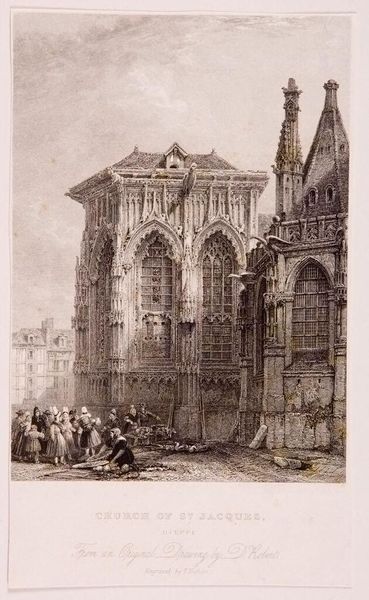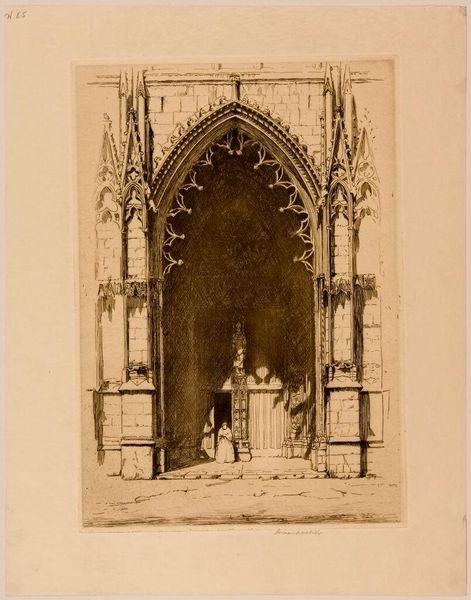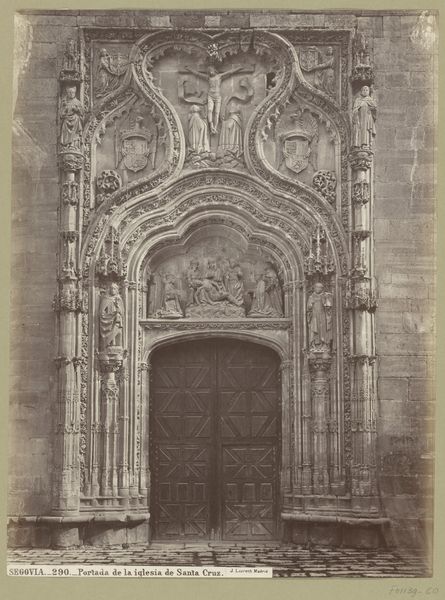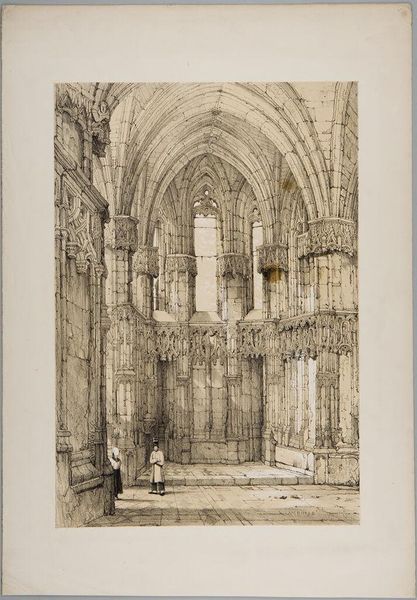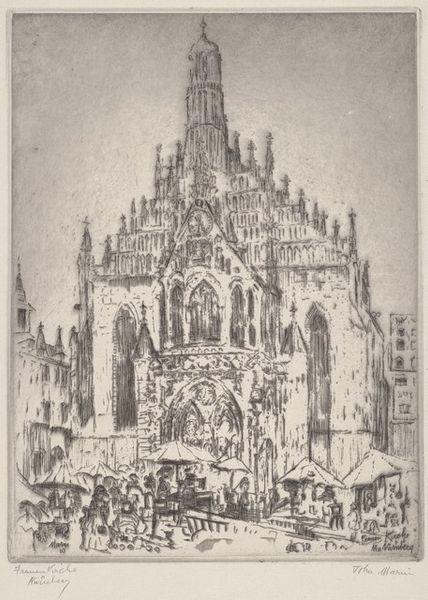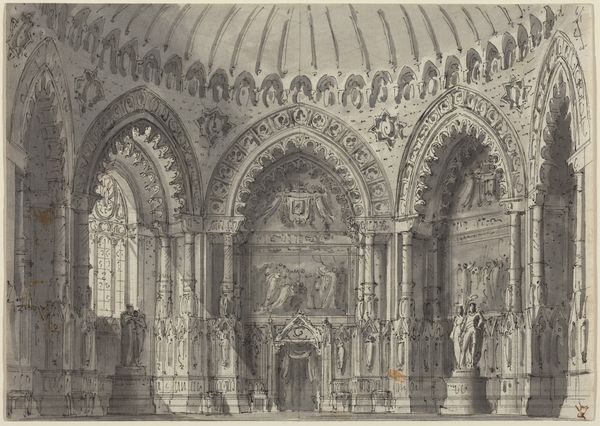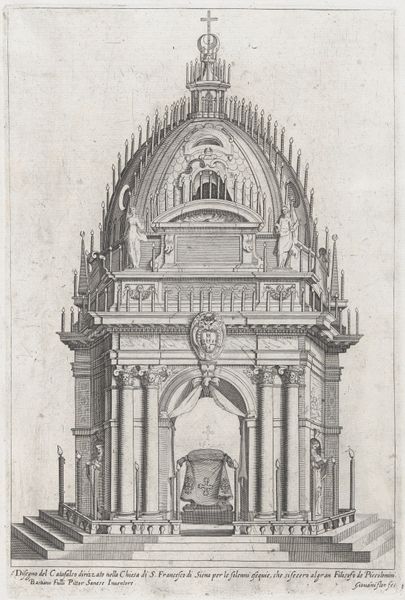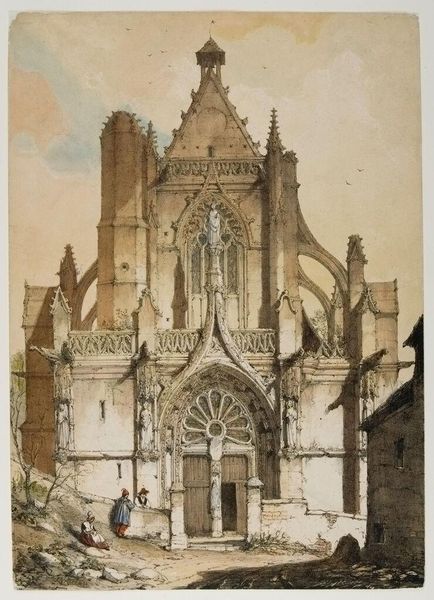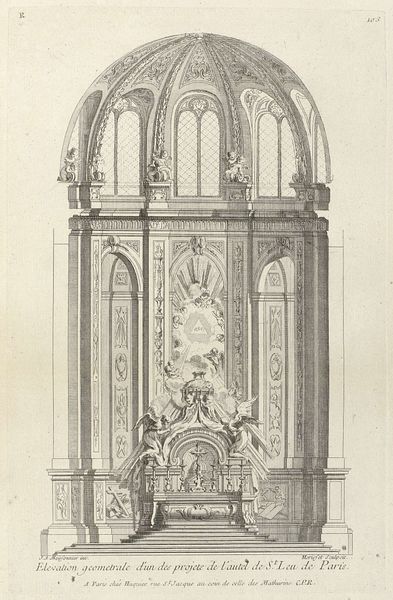
Portail de Saint-Marie de Belem; Façade Du Sud c. 19th century
Copyright: CC0 1.0
Editor: This print, "Portail de Saint-Marie de Belem," depicts the south facade. It's attributed to Best et Cie, and the level of detail is incredible. It feels imposing, almost oppressive, in its intricacy. What historical forces do you think shaped this architectural style? Curator: The intricate facade reflects the Manueline style, unique to Portugal, which emerged during a period of immense wealth and colonial expansion. Consider how this visual language, filled with maritime motifs and symbols of power, served to legitimize and celebrate Portugal's imperial ambitions and the resulting social hierarchies. Editor: So, the art is a statement of power? Curator: Absolutely. The monastery, funded by wealth extracted from colonized lands, becomes a visual embodiment of dominance. Think about how the portrayal of religious figures, often idealized, reinforces a particular narrative of faith and authority, while simultaneously obscuring the brutal realities of colonial exploitation. Editor: It's a lot more complex than just a pretty building. Thanks for the insights. Curator: Indeed. By understanding the sociopolitical context, we can critically examine how art and architecture were, and continue to be, implicated in shaping power dynamics.
Comments
No comments
Be the first to comment and join the conversation on the ultimate creative platform.

